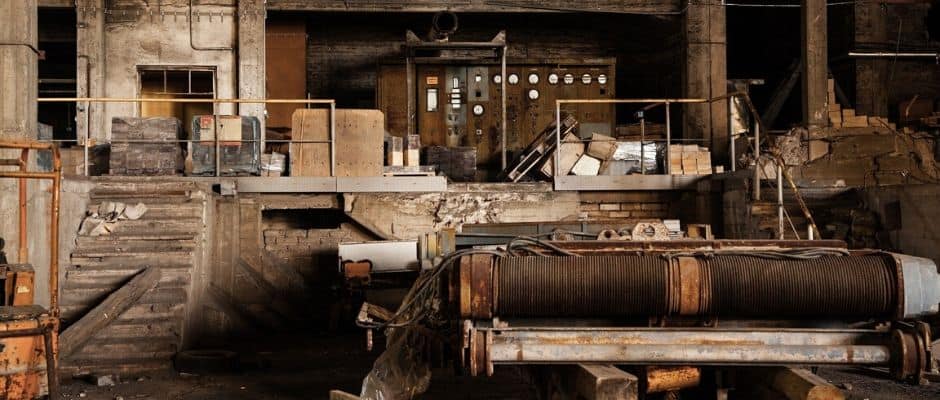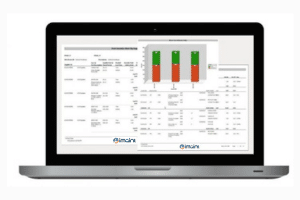Postponing maintenance tasks is common, especially in industries facing budget cuts. Maintenance can easily get pushed toward the bottom of an evolving priority list, especially if there is no tangible sign of a problem with the facility or asset in question. Deferred maintenance can lead to serious consequences, however, if not addressed properly.
Why Deferred Maintenance Occurs
There are numerous contributing factors that affect a company’s maintenance backlog, which consists of overdue maintenance tasks. The backlog is essentially made up of work that is past its targeted start date. Reasons may include not having the spare parts available when needed, or a lack of skilled professionals available to complete the task. Deferring maintenance on a regular basis can cause a backlog to increase exponentially. What started as a few missed tasks can quickly turn into a snowball effect. A disproportionately large backlog points toward a reactive maintenance strategy in which equipment failure is imminent.
According to Facilitiesnet.com, deferred maintenance grows in both scope and cost the longer it is prolonged. “The likelihood of incurring greater costs only increases with each instance of deferred maintenance,” which is especially true for facilities. As more and more repairs are delayed, whether its due to budget cuts or other reasons, buildings are neglected and deteriorate over time.
A Real-World Example
An article published by The Wall Street Journal detailed what caused the fire at U.S. Steel Corporation’s 120-year-old Clairton, PA manufacturing plant on Christmas Eve 2018. A corroded sprinkler pipe fell and severed another pipe delivering oil to a compressor, which led to a series of events that resulted in a fire the size of a football field. According to workers, vibration was detected in one of the compressors prior to the fire, but the company decided to postpone inspecting it until after the holiday to avoid paying overtime costs. The fire not only cost U.S. Steel an estimated $40 million in building repairs, but it also disabled the air pollution system in place and spurred multiple lawsuits against the company.
According to the WSJ article, the fire “fits a pattern of failures that have made many of U.S. Steel’s largest plants unreliable, inefficient and, in some cases, dangerous for workers and the surrounding community.” U.S. Steel apparently decreased its maintenance budget for buildings and structures at a facility near Detroit from $30 million to $3 million over a period of five years. “Managers had to wait until equipment broke down before ordering parts” and the number of mechanics and electricians was cut in half, leaving overworked crews no choice but to handle urgent repairs only. Additionally, the plant has received over 90 citations for violating its wastewater discharge permits and releasing carcinogenic chromium. The EPA’s investigation “found a lack of preventive maintenance on pipes and structure to contain the chromium” as well as “a lack of written procedures for cleaning and maintaining the wastewater treatment system.”
How to Prevent a Growing Maintenance Backlog
This is just one example of how reactive maintenance and an ever-growing backlog can cause catastrophic damage. A preventive maintenance strategy most likely could have saved U.S. Steel millions of dollars and eliminated the hazardous environmental and public health consequences it caused. Preventive maintenance (PM) takes place before equipment breaks down, and consists of either a time-based or meter count-based approach carried out at predetermined intervals. It’s employed by organizations to reduce the risk of failures, minimize unplanned downtime and increase equipment reliability. It’s the opposite of reactive maintenance, which takes place only after equipment breaks down.
If a company’s maintenance backlog begins to compound, steps to prioritize the work should be taken immediately. The backlog can be prioritized based on the entire maintenance operation or by asset. A low-risk asset can tolerate a longer maintenance backlog, while a high-risk asset can only tolerate a short maintenance backlog. Overdue maintenance work that is deemed high-risk should be completed as soon as possible. Through the use of a computerized maintenance management system (CMMS) or enterprise asset management (EAM) software, companies can automate the process of preventive maintenance and streamline work orders. Maintenance management software allows users to set up custom PM schedules for each asset or piece of equipment, and can even send automated reminders when work is due. Aside from other numerous benefits, it also enables companies to store a wealth of information on assets—such as date purchased, all work orders associated with the asset, repair history, parts, procedures, inspection guidelines, warranties and more.
CMMS/EAM systems provide the optimum solution for organizations who wish to transition from a reactive to proactive maintenance strategy. After successful implementation and proper training for end users has taken place, CMMS software can help management make smarter asset management decisions. It can certainly provide significant cost-savings, not to mention preserve the reputation of a company and enable its continued growth. For more information on how a maintenance management system can benefit your organization, contact DPSI today. We have over 30 years of experience developing robust, yet easy-to-use CMMS and EAM software.





